by Jackie Griffin Synnott, 2013, hardcover, 71 pages, $27.80
ISBN: 978-0-9576607-3-1.
Published by Jackie Griffin Synnott, Ireland. www.rhymesforremedies.com
Reviewed by Laura Sholtz, PhD, RSHom(NA), CCH, FBIH
This colorful little book aims to help parents and anyone else who cares about children’s health to learn basic homeopathic remedies. It is a good, easy to use beginner’s manual, incorporating classic children’s nursery rhymes to introduce the sections covered. Within each chapter is included three remedies, and each remedy begins with a vibrant illustration to help students learn by having a picture of each remedy in their visual memories. It’s a good idea, especially for those just beginning their study of homeopathy, and feeling overwhelmed with trying to remember so many remedies at one time. This is a unique tool for learning, a fun book to read and peruse.
The chapters in RHYMES FOR REMEDIES include: Bruises, Burns, Colds/Flu, Colic, Cuts/Open Wounds, Earaches, Fever, and Sleeplessness, all areas that can impact children’s health. There is also a short section on How to Use This Book (pp.4-5), which is succinct and necessary for anyone who is not familiar with homeopathy. After reading this little book no inexperienced person should doubt his or her ability to give a remedy to their child, offering parents (and others) a real choice in how to treat an acute condition.
As an example of what is contained in this book, in the section on Fever (pp. 54-61), there is an illustration accompanying “Little Miss Muffet” for Aconite, “Rudolph the Red Nosed Reindeer” for Belladonna, and “A Pretty Little Girl” for Ferrum phos. Included along with each poem and illustration is a one page materia medica, just enough information to differentiate among possible remedies.
Most of the information in RHYMES FOR REMEDIES come from lectures given by the Irish School of Homeopathy, and also from Miranda Castro’s THE COMPLETE HOMEOPATHY HANDBOOK, another extremely useful guide. RHYMES FOR REMEDIES would make a wonderful present for new parents, offering knowledge and comfort in times of acute stress, giving options for handling the trials of childhood. Older children will also enjoy looking at and reading this enticing book, and will become budding homeopaths because of it! What could be better for passing this information along to future generations?
